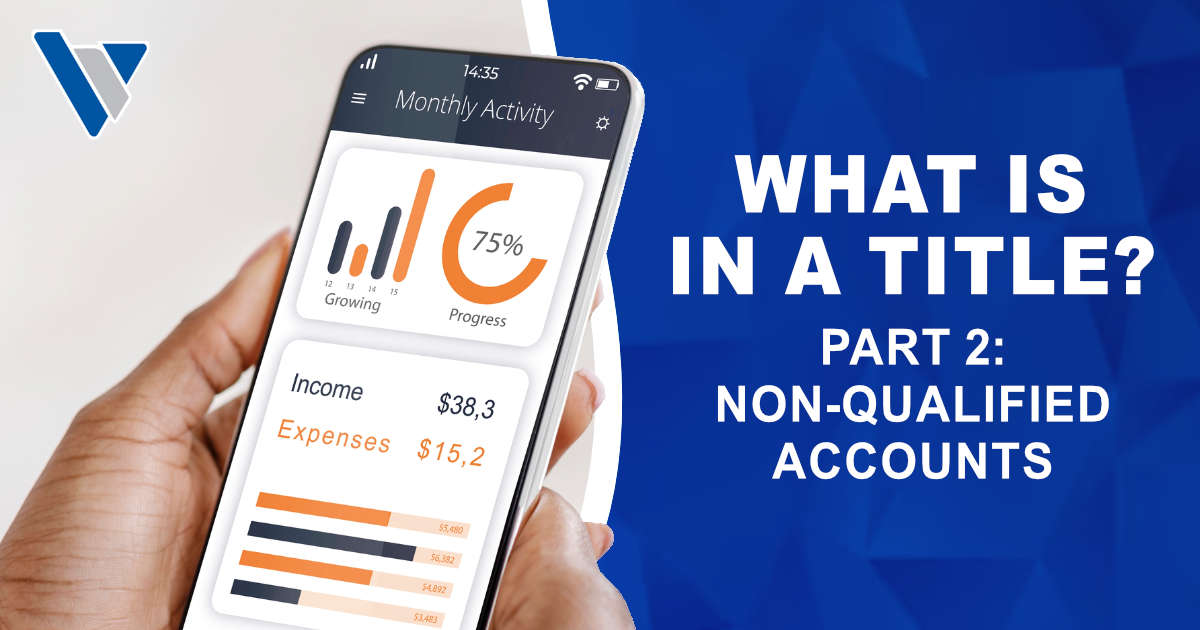In my last article, I discussed the importance of proper titles in regards to qualified accounts,...

Virtus Wealth Management believes that effective tax planning is one of the most neglected components of a successful financial review. We recognize the powerful impact of saving tax dollars and reinvesting them into wealth building assets, and we help our clients get ahead of their taxes by making proactive decisions to mitigate their tax burden accordingly. How do we do it?
There are many strategies to lowering tax liability, and we work with our clients to identify methods specific to their unique situation that can help. Here are some examples.
For clients that are working, taking advantage of their corporate benefits can be key, not only for building wealth over time, but for tax management. For our young adult clients early in their career, we may recommend taking advantage of their Roth 401(k), if they have one, to pay taxes now while their salaries are low and grow tax free from there. For our clients that are in their high earning years, we may recommend taking advantage of their Traditional 401(k) to defer taxes until later. Other benefits that can help with tax management are Flexible Spending Accounts, Health Savings Accounts, and Dependent Care Flexible Spending Accounts. All of these options allow our clients to set aside tax-free money as long as it’s used within the guidelines. Tax free money is music to our ears!
As part of our investment management, we manage capital gains for our clients. Tax harvesting is a strategy to lower current taxes paid to the U.S. federal government by deliberately selling an investment at a loss—i.e., deliberately taking a capital loss—in order to use that loss to offset taxes owed on an investment sold at a profit—i.e., a capital gain—or even taxes owed on personal income. We use this strategy on an annual basis, but it is also especially important to mitigate taxes if our client experiences a life event that generates a large capital gain (like exercising corporate stock options, selling a home, sudden wealth, etc.)
 A spousal IRA allows a working partner to open an individual retirement account (IRA) for a non-working spouse to save for retirement. Typically, only working individuals can contribute to an IRA, according to the IRS’ contribution limits. However, for married couples, there’s an exception to the rule. Spousal IRAs permit a working spouse to put money aside for retirement for a non-working spouse with tax-free (Roth IRA) or tax-deferred growth (Traditional IRA), or both (Combination). The rules on eligibility and deductibility can be tricky, so it’s important to understand the details to determine if this is a viable option.
A spousal IRA allows a working partner to open an individual retirement account (IRA) for a non-working spouse to save for retirement. Typically, only working individuals can contribute to an IRA, according to the IRS’ contribution limits. However, for married couples, there’s an exception to the rule. Spousal IRAs permit a working spouse to put money aside for retirement for a non-working spouse with tax-free (Roth IRA) or tax-deferred growth (Traditional IRA), or both (Combination). The rules on eligibility and deductibility can be tricky, so it’s important to understand the details to determine if this is a viable option.
Tax management really becomes key in retirement, and to manage taxes effectively in retirement, planning is a must. If our clients plan ahead and build up their investing buckets described below, it gives them options in retirement that could reduce their total lifetime tax burden and have a snowball effect.
The investing buckets are after-tax, tax deferred, and tax free.
Here are some examples of how our clients use the buckets to manage taxes in retirement.
Tax management is complicated, and unfortunately, there is no one size fits all rule. The strategy and methods used to reduce overall tax burdens are dependent on the situation. Determining the strategy that works best for our client’s specific situation in advance is the key, so together we can proactively plan accordingly and prepare as needed. We are here to help!
Virtus Wealth Management and LPL Financial do not provide tax advice or services.